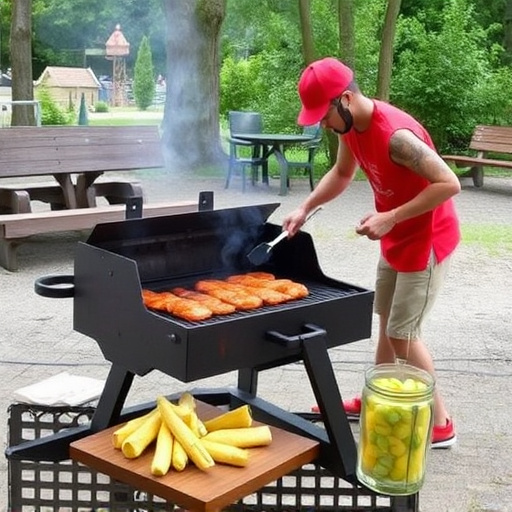Smoked BBQ ribs recipes are a culinary artform, with flavor profiles enhanced by precise temperature control and wood chips like hickory or applewood. Selecting the right wood is key to achieving your desired smoky taste—from robust oak to fruity applewood. Mastering the smoking process at low temperatures for 3-4 hours ensures tender ribs. A captivating sauce made with tomato paste, brown sugar, paprika, and liquid smoke elevates the recipe further, adding a symphony of flavors that impresses food enthusiasts worldwide.
Unleash the ultimate smoky experience with a perfect smoked BBQ ribs recipe. This guide explores the art of crafting rich, complex flavor profiles in every bite. From understanding the magic of smoking meats to selecting the ideal wood (oak, maple, and more), we master the process at precise temperatures and times. Learn techniques to enhance your ribs and create a compelling sauce that amplifies the taste. Discover how to make every BBQ gathering unforgettable with these step-by-step tips for the ultimate smoked BBQ ribs recipe.
- Understanding Smoky Flavor Profiles: The Art of Smoking Meats
- Choosing the Right Wood for Your BBQ Ribs: Oak, Maple, and More
- Mastering the Smoking Process: Temperatures, Times, and Techniques
- Creating a Compelling Sauce: Enhancing the Smoked BBQ Ribs Experience
Understanding Smoky Flavor Profiles: The Art of Smoking Meats
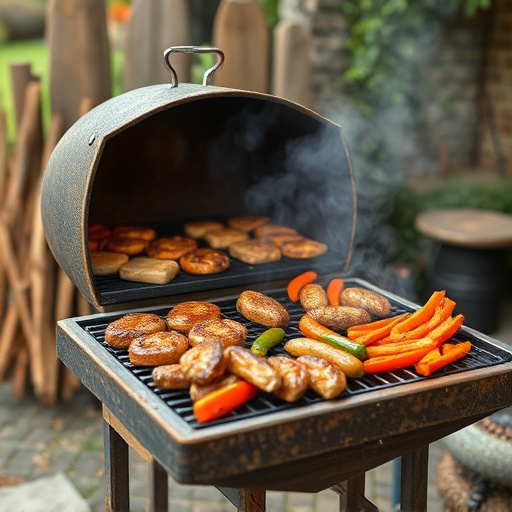
Smoky flavor profiles are integral to the allure of smoked BBQ ribs recipes, infusing each bite with a rich, complex depth that transports taste buds to a leisurely cookout or a cozy smokehouse. The art of smoking meats involves carefully controlling temperature and humidity to gently cook the meat over wood fires, allowing the natural sugars to caramelize while the smoke imparts its distinctive flavor. Different types of wood chips—like hickory, mesquite, or applewood—offer unique smoky notes, from sweet and fruity to pungent and robust, catering to diverse palates.
This meticulous process not only tenderizes the ribs but also creates a layer of flavor that permeates every inch of the meat. The subtle smoke aroma wafting through the air adds to the overall dining experience, making smoked BBQ ribs recipes a favorite among food enthusiasts worldwide. Whether enjoyed at a casual gathering or elevated to culinary art, understanding and appreciating smoky flavor profiles elevates the humble rib from mere meal to sensory journey.
Choosing the Right Wood for Your BBQ Ribs: Oak, Maple, and More
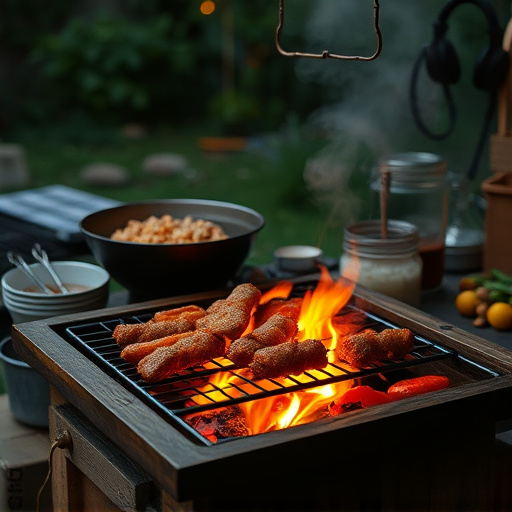
When crafting the perfect smoked BBQ ribs recipe, selecting the ideal wood is a key step to achieving that coveted smoky flavor in every bite. Different woods offer unique profiles, so choosing the right one can elevate your ribs from good to outstanding. Oak, for instance, imparts a robust, rich flavor with a slightly bitter edge, making it a popular choice for slow-cooked meats. Maple, on the other hand, provides a sweeter, milder smoke that complements the natural sweetness of ribs without overpowering them.
Consider the type of wood based on your personal preference and the desired intensity of smoke. Some chefs also experiment with fruits woods like apple or cherry for subtler, fruitier notes. Ultimately, the right wood selection can transform an ordinary rib recipe into a true culinary experience, ensuring each mouthwatering bite delivers that authentic smoky flavor profile sought by BBQ enthusiasts.
Mastering the Smoking Process: Temperatures, Times, and Techniques
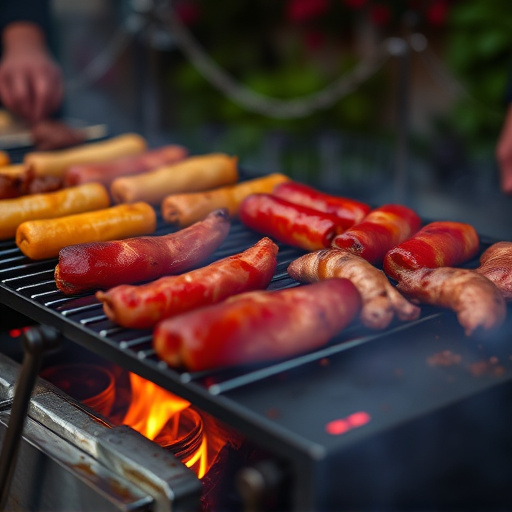
Mastering the smoking process is key to achieving those coveted, mouthwatering smoked BBQ ribs in every bite. The art of smoking involves a delicate balance of temperature, time, and technique. Typically, low-and-slow is the mantra for tender, flavorful ribs. Most experts recommend smoking at temperatures between 225°F to 250°F (107°C to 121°C), allowing meat to slowly render its fats and juices, resulting in a melt-in-your-mouth texture. Times can vary greatly depending on the size of your ribs and desired doneness, but plan for around 3 to 4 hours for half-rack ribs at these temperatures.
Techniques play a crucial role too. Whether you’re using a charcoal grill, wood-fired oven, or dedicated smoker, managing heat evenly is essential. For a classic smoky flavor, adding chunks of hardwood like hickory, apple, or mesquite to the fire adds aroma and depth. The process requires patience but the end result—ribs that are tender, tangy, and imbued with the essence of smoke—is definitely worth the wait for any smoked BBQ ribs recipe aficionado.
Creating a Compelling Sauce: Enhancing the Smoked BBQ Ribs Experience
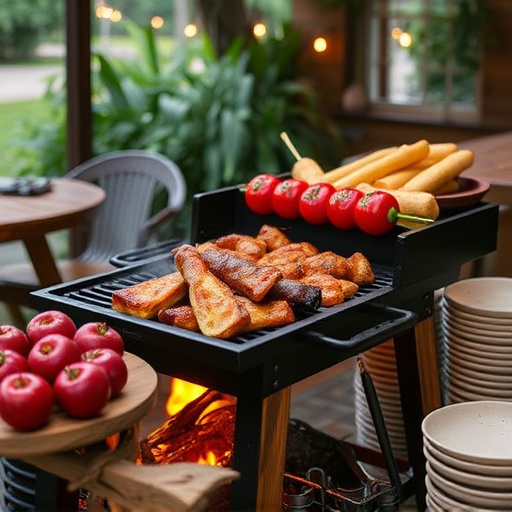
Creating a compelling sauce is an art that takes your smoked BBQ ribs recipe to the next level. It’s not just about flavor; it’s about enhancing every bite, wrapping each rib in a blanket of deliciousness. The key lies in balancing sweetness, tanginess, and smokiness—a symphony of tastes that sing with every chew. Start with a base of tomato paste or ketchup for that familiar BBQ tang, then add a touch of brown sugar to balance the acidity and bring out the smoky flavor. A blend of paprika, garlic powder, and onion powder adds depth and warmth, while a dash of liquid smoke rounds it all off, infusing your sauce with that authentic smoked ribs essence.
This sauce isn’t just for drizzling; it’s a tool for maximizing the experience. Brush it on during the last half of cooking to seal in juices and deepen the flavor. Use it as a baste while smoking, allowing the sticky sweetness to caramelize against the meat, creating a delectable crust. For an extra kick, serve it on the side so folks can customize their bites—a perfect blend of traditional and modern techniques that elevates your smoked BBQ ribs recipe from ordinary to extraordinary.
